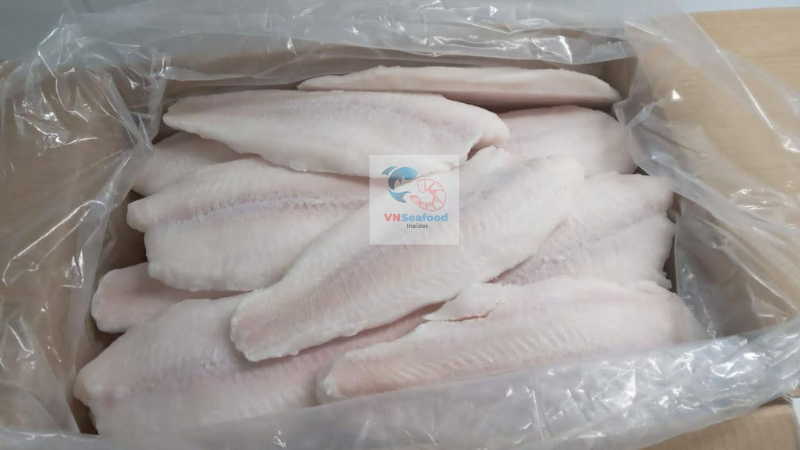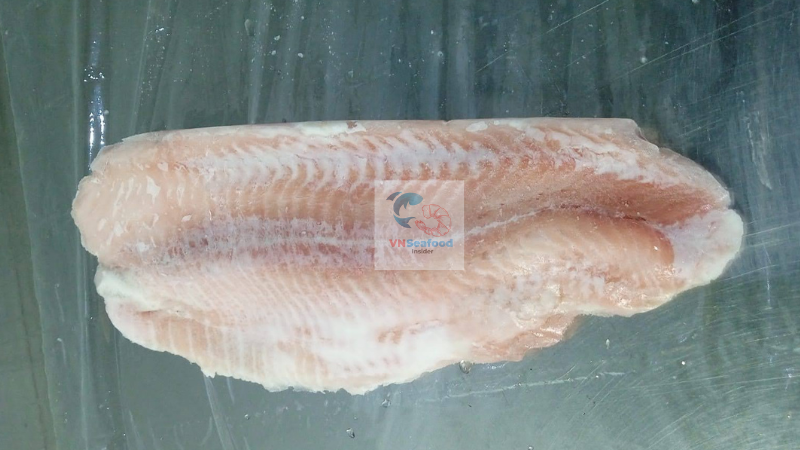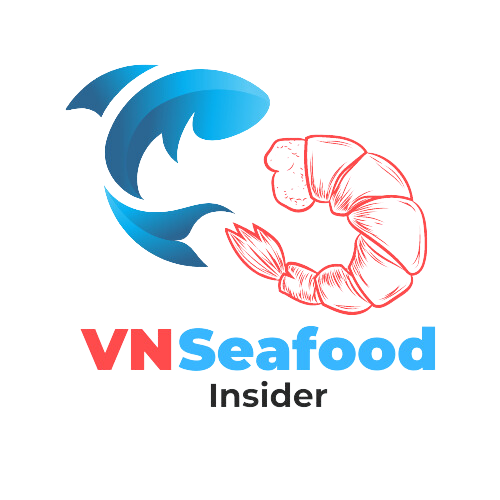In the competitive world of seafood imports, knowledge isn’t just power—it’s profit. At VNSeafoodInsider, we’ve seen countless importers struggle with pangasius shipments that didn’t meet their expectations or market requirements. Whether you’re a seasoned seafood professional or new to pangasius imports, understanding the intricacies of pangasius fillet grading guideline can make the difference between a successful shipment and a costly mistake.

Outline
ToggleIntroduction to Pangasius Fillet Grading
The pangasius industry has transformed dramatically over the past two decades, evolving from a regional Asian fish to a global seafood staple. With annual production exceeding 1.5 million tons and exports reaching over 145 countries, pangasius (also known as basa or swai) has become one of the most traded whitefish species worldwide.
But not all pangasius fillets are created equal. The grading system serves as the industry’s quality language—a critical tool that determines value, influences pricing, and ultimately affects your bottom line. For importers like you, understanding this system isn’t optional; it’s essential for success in this competitive market.
“I once ordered three containers of pangasius without specifying the exact grade requirements,” shared Michael Chen, a seafood distributor from California. “The shipment arrived with inconsistent sizing and trimming. My customers noticed immediately, and I lost their trust—and future orders.” Don’t let this happen to you.
Read more: Vietnam Pangasius Market Trends and Forecast 2025 at here
The Pangasius Fillet Grading System Explained
The pangasius grading system might seem complex at first glance, but it follows logical principles based on quality parameters that matter to end consumers. At VNSeafoodInsider, we break down these complexities to help you navigate with confidence.

International Standards vs. Processor Standards
While organizations like the Aquaculture Stewardship Council (ASC) have established certain sustainability standards, pangasius quality grades often vary between processors. Vietnamese producers typically follow a grading system that classifies fillets into several categories:
- Grade A: Premium quality, highest standard
- Grade B: Good quality with minor imperfections
- Grade C: Standard quality with acceptable imperfections
- Grade D: Lower quality, usually processed into value-added products
The differences between these grades lie in several visual and physical parameters, which we’ll explore in detail. Understanding these nuances of pangasius fillet grading allows you to specify exactly what you need when placing orders.
Visual Assessment Criteria
Experienced quality inspectors assess pangasius fillets based on:
- Uniformity: Consistency in appearance across fillets
- Intact fillets: Absence of tears or holes
- Proper shape: Well-defined fillet structure
- Free from defects: Minimal black spots, blood spots, or bruising
Laboratory Testing Requirements
Beyond visual inspection, laboratory testing forms an integral part of the grading process, measuring:
- Moisture content: Typically between 82-86% depending on grade
- Protein levels: Higher in premium grades
- Microbiological parameters: Must meet importing country requirements
One VNSeafoodInsider client from Germany reported saving over $55,000 annually after learning to request specific laboratory reports before shipment—preventing quality disputes that had previously plagued their business.
Trimming Standards in Pangasius Fillet Grading
Ever noticed how some pangasius fillets look perfectly neat while others have irregular edges? The difference lies in trimming standards—a critical factor in grade determination and price setting.
Well-Trimmed vs. Semi-Trimmed vs. Untrimmed Definitions
Pangasius fillets are typically categorized by three distinct trimming levels:
- Well-trimmed (Premium): Clean edges with precise cuts, no visible belly flap, perfectly shaped with all fat and red meat removed. These fillets command premium prices and are ideal for high-end restaurants and retail displays where presentation is paramount.
- Semi-trimmed (Standard): Acceptable edges with some minor irregularities, small belly flap may remain, and minimal fat still visible. This is the most common commercial grade, offering a balance between quality and cost for foodservice and mid-tier retail applications.

- Untrimmed (Economy): Rough edges, significant belly flap present, and visible fat layers remain. These fillets are typically used for further processing into breaded products, fish fingers, or other value-added items where the final appearance is masked by coatings or sauces.
The difference is immediately apparent when you place these fillets side by side. Well-trimmed fillets yield higher recovery rates for portioning operations and present better on the plate, making them preferred for high-end foodservice.
Red Meat Content Allowances
Red meat (bloodline) content varies by grade:
- Grade A: ≤1% red meat visible
- Grade B: ≤3% red meat visible
- Grade C: ≤5% red meat visible
“Red meat content isn’t just about appearance,” notes Lisa Torres, Executive Chef at Pacific Seafood Importers. “It affects taste and texture significantly. For our premium restaurant clients, we exclusively source Grade A with less than 1% red meat. It’s the way we choose for pangasius fillet grading”
Belly Fat Specifications
Belly fat tolerances also define grades:
- Premium specification: Less than 3mm fat layer
- Standard specification: 3-8mm fat layer
- Value specification: Over 8mm fat layer (typically used for processed products)
Excess belly fat not only affects appearance but can create flavor issues when cooking. For retail or foodservice applications where the fillet is the star, minimizing belly fat is crucial for customer satisfaction.
Size Classifications for Pangasius Fillets
Size matters—especially when you’re serving specific market segments. Pangasius size classification is straightforward but vital for meeting your customers’ expectations.
Standard Size Ranges
The industry typically classifies pangasius fillets in these ranges:
- Small: 80-120g per fillet
- Medium and commericial size: 120-170g per fillet, 170-220g per fillet
- Large: 220-300g per fillet
- Extra large: Over 300g per fillet
In practice, most processors will custom-pack to your specifications within these general categories. At VNSeafoodInsider, we’ve helped importers secure exactly the size range their market demands.
Market Preferences by Region
We’ve observed distinct size preferences across markets:

- European markets: Prefer medium and commercial size (120-170g, 170-220gr) fillets for portion control
- US markets: Favor both small and medium (80-170,170-220g) fillets for foodservice
- Middle Eastern markets: Often seek extra large fillets (400g+)
- Asian markets: Variable preferences depending on application
Understanding your end market’s preferences is crucial. As Tony Martinez, a long-time pangasius importer, told us: “I lost an important customer because I supplied 220g fillets when their portion control system was calibrated for 150g pieces. Now I always confirm size requirements before ordering.”
How Size Affects Pricing Structure
Size premium follows a curve—with both the smallest and largest fillets commanding higher prices:
- Medium fillets (120-170g) typically represent the baseline price
- Small fillets (<120g) may cost 5-10% more due to processing challenges
- Extra-large fillets (>220g) often command a 10-15% premium
Smart importers factor these premiums into their calculations when determining which sizes best suit their margin requirements and market needs.
Color Grading and Its Importance
Color might seem subjective, but in pangasius, it’s a critical quality indicator with direct market implications.
White vs. Pink vs. Yellow Flesh
Pangasius fillets typically fall into three color categories:
- White: Highly desirable, premium appearance
- Pink/light pink: Acceptable but less premium
- Yellow: Often indicates quality issues or improper handling
The presence of yellow tints is particularly problematic, as it can signal oxidation or quality deterioration. Premium pangasius specifications almost always include color requirements.
Color Scoring Methods
Professional graders use color charts (similar to paint swatches) to objectively categorize fillet color:
- Color score 1: Pure white, premium
- Color score 2: Off-white, acceptable
- Color score 3: Pink or yellow tint, lower grade
Many importers include specific color score requirements in their purchase specifications to ensure consistency across shipments.
Market Preferences and Price Implications
Color preferences vary by market:
- Western markets generally prefer the whitest fillets
- Some Asian markets accept pink-tinted fillets for certain culinary applications
- Yellow-tinted fillets face resistance in most markets
“The whitest fillets can command up to 15% premium in certain European markets,” notes Eduardo Santos, procurement director at Mediterranean Seafood Imports. “For retail packaging where visual appeal is paramount, color consistency can make or break a product line.”
Read more: Top 20 biggest seafood companies in vietnam
Quality Parameters Beyond Grading
While the pangasius fillet grading system captures many quality aspects, savvy importers also consider these additional factors.
Texture Assessment
Texture profoundly impacts consumer experience and varies considerably based on:
- Farming practices: Density, feed type, harvesting methods
- Processing techniques: Freezing speed, temperature management
- Age at harvest: Younger fish typically yield more tender fillets

The ideal pangasius texture is firm yet tender—never mushy or rubbery. Premium pangasius specifications often include measurable texture parameters.
Moisture Content
Moisture content directly affects cooking performance and yield:
- Premium fillets (chemical free): 80-82% moisture
- Standard fillets (light treated): 83-85% moisture
- Economy fillets: Often exceed 85% moisture
Higher moisture content typically indicates water retention treatments that may reduce cooking yield and affect texture. Many European importers now specify maximum moisture content in their purchasing contracts.
Glazing Percentage Considerations
Glazing (the protective ice coating on frozen fillets) is necessary but varies widely:
- Light glaze: 4-6% of total weight
- Standard glaze: 8-12% of total weight
- Heavy glaze: Over 12% of total weight
Be aware that glazing directly impacts net weight. A smart importer factors glazing percentage into cost calculations—after all, you don’t want to pay fillet prices for ice!
Conclusion: Leveraging Grading Knowledge for Better Imports
As we’ve seen, pangasius fillet grading is multifaceted, combining visual assessments, physical measurements, and laboratory testing. At VNSeafoodInsider, we’ve witnessed how importers who master these distinctions consistently outperform their less-informed competitors.
The next time you place a pangasius order, consider these action steps:
- Specify exact grade requirements in writing, addressing size, color, trimming, and fat content
- Request pre-shipment samples to verify quality before full production
- Consider third-party inspection for large or important orders
- Develop relationships with processors who understand your specific needs
- Educate your customers about the grades you offer and their appropriate applications
Remember, in pangasius importing, the devil is in the details. The more specific your requirements, the more likely you’ll receive exactly what your market demands.
Have questions about pangasius fillet grading or need assistance sourcing the right quality for your market? Contact VNSeafoodInsider today—we’re here to help you navigate the complex world of pangasius imports with confidence.

Pingback: Pangasius Quality Control, Prevent Import Issues (Complete Guide)